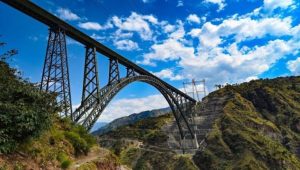Researchers have developed a method that could one day be used to build roads on the moon. Their experiment involved melting lunar soil with focused sunlight to turn it into a more solid substance. The approach, based on proof-of-concept experiments involving lasers and a substance resembling Moon dust and outlined in Scientific Reports on October 12, could be used to build other infrastructure such as landing pads.
Engineer Juan-Carlos Ginés-Palomares and his colleagues, based at the Technical University of Berlin, conducted experiments that involved manufacturing tiles by heating and melting the moon dust substitute. These tiles were then allowed to cool, producing a strong, consolidated piece with an interlocking design that measured around 25 millimeters in thickness. Such tiles could be placed alongside each other to cover a wide area of lunar soil.
In the experiments, the researchers used high-powered carbon dioxide laser beams to heat the dust substitute, replicating the effects of concentrated sunlight. The spot of the beam had a maximum diameter of 100 millimeters and 12 kilowatts of maximum power.
To reproduce this approach on the moon, the scientists suggest using a special type of lens measuring over 7 feet across that would focus sunlight like a magnifying glass. This lens would enable the manufacture of tiles using only sunlight and lunar soil.















